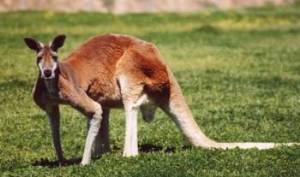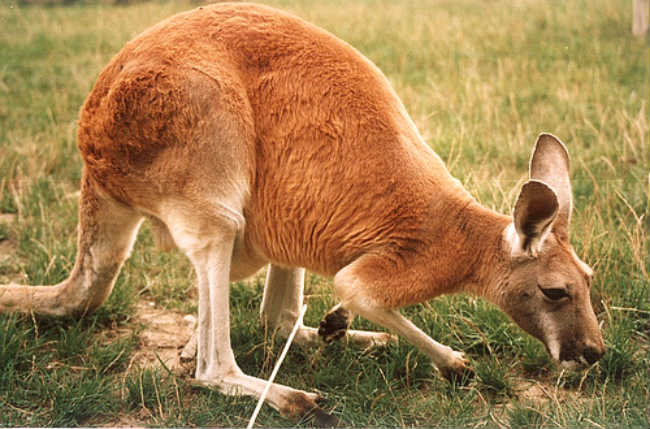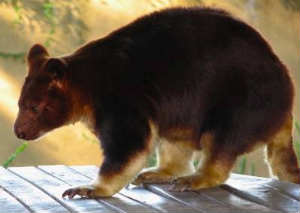What do kangaroos eat?
Kangaroo diet
Online Biology Dictionary
What do kangaroos eat? That depends…
There are many different kinds of kangaroos, and kangaroo diet and habitat varies accordingly. Some live up in trees, some in the desert, others occupy open grasslands. The major dietary difference is between tree kangaroos and terrestrial kangaroos.
In both tree kangaroos and terrestrial kangaroos, the stomach is large, and contains zymotic bacteria capable of breaking down tough fibrous food. The digestive process is similar to what goes on in a cow’s stomach, although the anatomy differs. But terrestrial kangaroos apply their high-power digestion tools to grass primarily, while leaves and fruit are the main foods of tree kangaroos.
Also, tree kangaroos have a broader diet that may include bark, sap, and flowers. When they can get them, they eat eggs, birds, and other small animals, too. Terrestrial kangaroos are strict vegetarians. It’s little known, but kangaroos have a ruminant stomach, as do cows, deer and camels, so they can digest foods, such as cellulose, that many other mammals can’t.
Three general types of terrestrial kangaroos are recognized, wallabies, wallaroos, and ordinary kangaroos. In terms of weight, wallaroos are about the same size as ordinary kangaroos, but they are stouter and shorter. Wallabies are generally smaller than either wallaroos or ordinary kangaroos.
Tree kangaroos, as their name indicates, spend most of their time in trees, but they also come down to the ground from time to time to feed. Like terrestrial kangaroos, they have strong hind legs and long, narrow feet, but they have longer tails. Their stronger forelegs, longer claws, and rubbery soles allow them to get a good grip on trees.
Most terrestrial kangaroos drink very little water. They can get most of the water they need by eating green plants. Red kangaroos can go without water for two or three months (red kangaroo habitat is generally quite xeric). The tammar wallaby (Macropus eugenii) is able to live even off saltwater.
Some important notes on kangaroo diet:
- Kangaroos spring into action whenever food is around.
- They jump for joy when a meal is mentioned.
- They are hoppy to eat if you’re willing to serve them.
- They like to carry their lunches in pouches, not in bags.
- Their pouches aren’t ziplocked, but are still great for storing food, etc.
-
And most restaurants won’t serve them because, as Fats Waller says, they feet’s too big!



 Cat-kangaroo hybrids >>
Cat-kangaroo hybrids >>